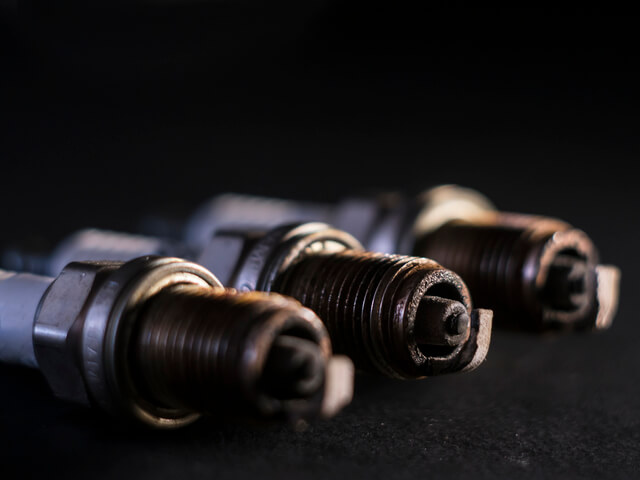Typically, the check gauge light comes on when one of the gauges is out of range, such as the Low engine oil pressure, High engine temperature, Low fuel level, Loose gas cap, Malfunctioning sensor, and Electrical problem. Or other fluids monitored by the gauges. Examine all gauges while the engine runs to determine which is out of range. Let’s find out what check gages mean.
On a car, the check-gauge light shows that a problem has occurred and that the vehicle requires inspection, service, or repair.
A check engine light can indicate a variety of problems, from a loose gas cap to engine failure. Other indicator lights can signal specific problems, such as high temperature or low oil pressure.
If the sensor is malfunctioning, it can indicate a problem with the emissions system, engine performance, or worn coils. When the indicator light indicates a failure in the vehicle’s electrical system, there is a more costly problem. All gauges are connected to the vehicle components or engine through a metal line or tubing to ensure proper operation.
In summary, indicator lights can signal a variety of problems with a vehicle, from minor to serious. If you see an indicator light come on, it is important to have the problem diagnosed and repaired as soon as possible.
What Does It Mean When My “Check Gauges” Light Comes On?

Typically, when the “Check Gauges” light glows, it indicates that one of the gauges has gone out of range, such as the electrical system, low engine oil, or other fluids monitored by the gauges. We always recommend checking the fluid levels under the hood of your car at least once a week.
The engine oil level was so low that it was not registering on the dipstick. Low oil levels shorten the engine’s life and, depending on how low they are, can cause it to seize.
If someone had checked her engine oil regularly, they could have avoided rebuilding their engine due to the absence of lubrication. A properly lubed engine will provide excellent lubrication to protect your engines from wear and tear.
Why does the ” Check Gauges” light come on
The “Check Gages” light on a car dashboard means that one or more of the vehicle’s gauges is out of range. This can be due to a variety of problems, including:
- Low engine oil pressure
- High engine temperature
- Low fuel level
- Loose gas cap
- Malfunctioning sensor
- Electrical problem
Low Engine Oil Pressure
This is a severe problem that can lead to engine damage if not corrected immediately. If you see the “Check Gauges” light comes on and your engine oil pressure gauge is low, pull over to a safe location and add more oil. If the light stays on after adding oil, or if your engine oil pressure gauge is still low, take your car to a mechanic immediately.
High Engine Temperature
This can also lead to engine damage if not corrected. If you see the “Check Gauges” light comes on and your engine temperature gauge is high, pull over to a safe location and let the engine cool down. Once the engine has cooled down, add more coolant if necessary. If the light stays on after the engine has cooled down, or if your engine temperature gauge is still high, take your car to a mechanic immediately.
Low Fuel Level
This is not a serious problem, but it is important to add gas as soon as possible to avoid running out of fuel and causing your car to stall.
Loose Gas Cap
This can cause the “Check Gauges” light to come on, preventing the fuel vapors from being properly vented. Tighten the gas cap, and the light should go off.
Malfunctioning Sensor
Any of the sensors that monitor the vehicle’s gauges can malfunction, causing the “Check Gauges” light to come on. If the light comes on intermittently, it is likely caused by a faulty sensor.
Electrical Problem
A problem with the vehicle’s electrical system can also cause the “Check Gauges” light to come on. This is more likely to happen if the light comes on and stays on continuously.
What Do You Do When Your Check Gauge Light Comes On?
The control gauge warning light comes on when at least one other light comes on, although it can also come on inadvertently. Let’s examine what to do if the check gauge light comes on. We have compiled a list of the standard indicators seen on most cars today. If any of these warning lights come on, you should act immediately.
Low Engine Oil Pressure.
If the engine oil pressure gauge is low, add more oil immediately. If the light stays on after adding oil, or if the engine oil pressure gauge is still low, take your car to a mechanic immediately.
High Engine Temperature
If the engine temperature gauge is high, pull to a safe location and let the engine cool down. Once the engine has cooled down, you can add more coolant if necessary. If the light stays on after the engine has cooled down, or if the engine temperature gauge is still high, take your car to a mechanic immediately.
Low Fuel Level
Add gas as soon as possible.
Loose Gas Cap
Tighten the gas cap.
Malfunctioning sensor
If the light comes on intermittently, it is likely caused by a faulty sensor. You may be able to clear the code and get the light to go off by disconnecting the battery for a few minutes. However, it is best to have the sensor checked and replaced by a mechanic.
Electrical problem
If the light comes on and stays on continuously, it is more likely to be caused by an electrical problem. Take your car to a mechanic to have the electrical system checked.
Add Coolant
Ensure that the radiator has enough coolant, as it is crucial for maintaining the engine’s temperature. Also, check the water level in the radiator and refill it if necessary.
Seat Belt Reminder
This safety feature reminds you to fasten your seat belt before driving. Always ensure that you and all passengers have their seat belts securely fastened.
Airbag Warning
If the airbag warning light is on, it indicates a problem with the airbag system. It is crucial to get this checked by a mechanic immediately as it can affect the vehicle’s safety in case of a collision.
ABS Brake Warning
The Anti-lock Braking System (ABS) helps maintain steering control during an emergency stop. If the ABS warning light is on, there may be a problem with the system, and you should consult a mechanic.
Brake Pad Warning
This light indicates that the brake pads may be worn out and need replacement. It’s crucial for safe driving to ensure that your brake pads are in good condition.
Check Tire Pressure
Regularly check the tire pressure and re-inflate the tires if necessary. Proper tire pressure ensures optimal performance and safety of the vehicle. You can get a tire pressure gauge to easily check the pressure as needed.
Battery Warning
The battery warning light will illuminate if there’s a problem with your vehicle’s battery or the electrical system. Check the battery’s health and the wiring, and replace the battery if needed.
Expert Opinion.
The “Check Gages” light on a car dashboard is an important warning light that should not be ignored. It indicates that one or more of the vehicle’s gauges are out of range. This could be due to various problems, including low engine oil pressure, high engine temperature, low fuel level, loose gas cap, malfunctioning sensor, or electrical problems.
If you see the “Check Gages” light come on. It is important to pull over to a safe location and check your gauges immediately. If you see any gauge readings that are outside of the normal range, take the necessary steps to correct the problem. If you are unable to identify and correct the problem yourself, you should take your car to a mechanic to have it diagnosed and repaired.
Ignoring the “Check Gages” light can lead to serious engine damage or even a breakdown. Therefore, it is important to be aware of the meaning of this light and to take action immediately if you see it come on.







